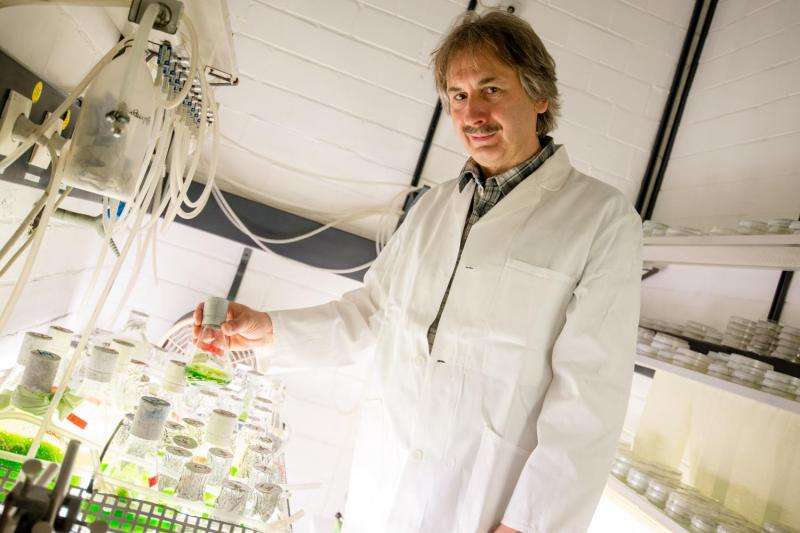Hydrogen synthesis—when enzymes assemble themselves in the test tube

Researchers from Bochum have engineered a hydrogen-producing enzyme in the test tube that works as efficiently as the original. The protein – a so-called hydrogenase from green algae – is made up of a protein scaffold and a cofactor. The latter is the reaction centre where the substances that react with each other dock. When the researchers added various chemically synthesised substances to the protein scaffold, the cofactor spontaneously assembled.
The team headed by Dr Jens Noth and Prof Dr Thomas Happe at the Ruhr-Universität Bochum report the results in the journal Angewandte Chemie. The researchers intend to lay the foundation for artificial, hydrogen-producing enzymes that will one day be manufactured on an industrial level. Hydrogenases are very efficient producers of the potential energy carrier and can do without the expensive precious metal platinum which is currently required for hydrogen synthesis.
Replacing sulphur by selenium
In nature, the hydrogenase cofactor is made up of iron and sulphur atoms. They are bonded in the protein in a unique manner. In the artificial variant, the researchers replaced the sulphur atoms by selenium atoms, which have more than twice as much mass. Using this method, they marked the enzyme's cofactor and were able to analyse it in more detail.
The tests revealed that the artificial enzyme variant has the same biochemical properties as the original that occurs in nature. With the aid of other biophysical methods, the group intends to figure out the reaction mechanism in more detail that is used by the hydrogenase for the production of hydrogen.
More information: Jens Noth et al. [FeFe]-Hydrogenase with Chalcogenide Substitutions at the H-Cluster Maintains Full HEvolution Activity, Angewandte Chemie (2016). DOI: 10.1002/ange.201511896
Journal information: Angewandte Chemie
Provided by Ruhr-Universitaet-Bochum



















